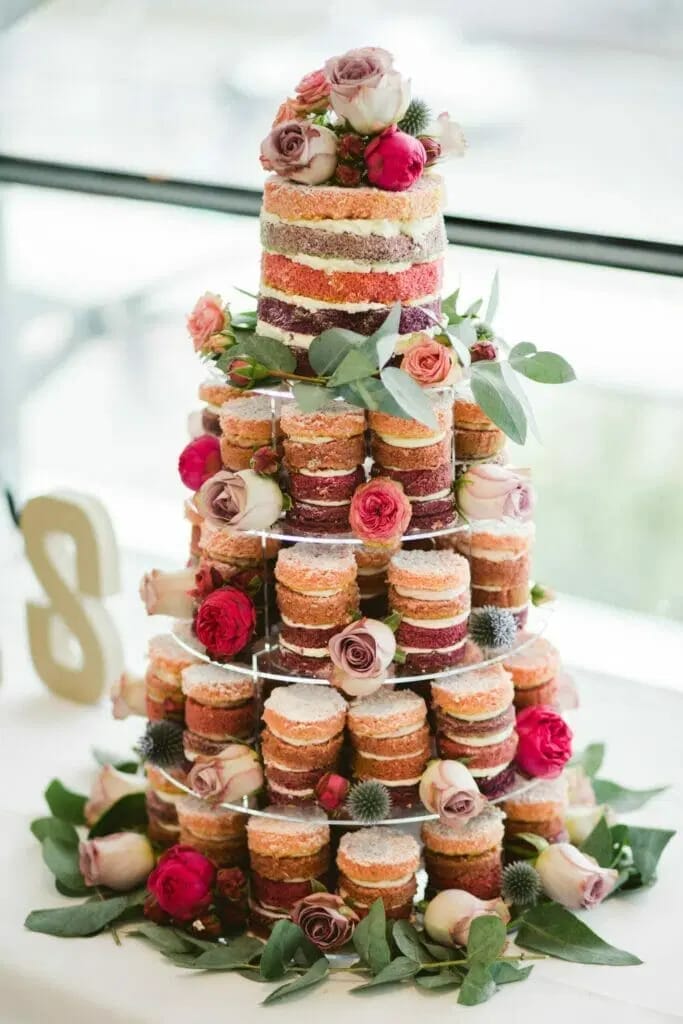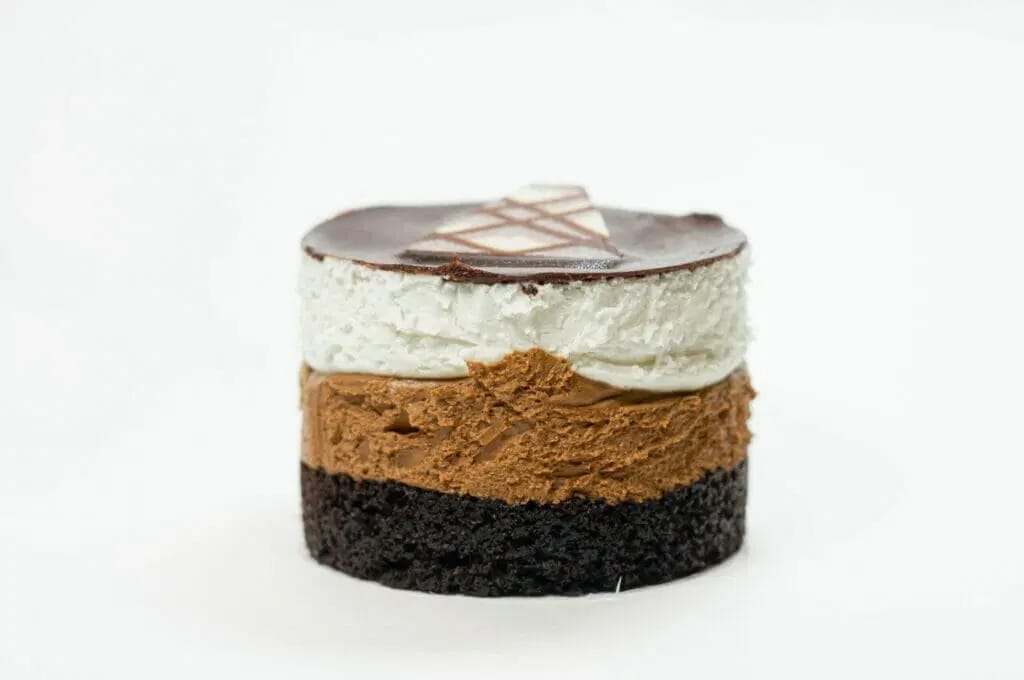As an Amazon Associate, I earn from qualifying purchases. In addition, I participate in several other affiliate programs that allow me to earn while I recommend products I love.
When it comes to baking and cake decorating, a level cake is the foundation for a professional and visually appealing masterpiece.
Whether you’re baking a single-layer cake or preparing tiers for a grand celebration, leveling your cake is an essential step that ensures an even surface for smooth frosting and filling distribution.
In this guide, we’ll take you through the process of leveling a cake like a pro, providing you with the tips, techniques, and tools needed to achieve a flawlessly leveled cake layer.

Why Leveling a Cake Matters
Want to know why it’s important to learn how to level off a cake?
Before we delve into the nitty-gritty of leveling a cake, let’s understand why this step holds such significance in the baking world.
Uneven cakes can present a multitude of challenges, from wobbly tiers in a wedding cake to frustrating frosting mishaps on a birthday cake.
Leveling a cake not only creates a stable foundation for decorating but also ensures a visually appealing finish that will impress your guests.
A leveled cake means a smooth and consistent surface, allowing frostings and fillings to spread evenly across the layers.
This uniformity ensures that each bite of your cake delivers the perfect balance of flavors and textures, delighting both the eyes and the taste buds.
Moreover, leveled cakes are crucial when creating tiered cakes, providing stability and preventing the dreaded “leaning tower” effect.

Tools and Equipment: how to make a cake level
Before you start leveling your cake, it’s essential to gather the necessary tools.
The most common tools for leveling a cake include a cake leveler, serrated knife, or dental floss.
A cake leveler is specifically designed for this purpose, offering adjustable heights to create even layers.
However, a serrated knife or dental floss can also do the job effectively.
Optionally, you can use a cake saw, cake leveler strips, and a cake turntable to achieve even more precise results.
Whichever tools you choose, always prioritize safety by handling sharp objects carefully and keeping them out of reach of children.
Preparing the Cake for Leveling

Before leveling your cake, ensure it is entirely cooled to avoid crumbling and damaging the layers.
Once cooled, remove any decorations, frostings, or fondant from the cake’s surface.
This provides a clear view of the cake’s structure and allows for an accurate leveling process.
Additionally, place the cake on a stable surface, such as a cake board or cake stand, to prevent any shifting or tilting while you level.
Methods for Leveling a Cake
There are several methods to level a cake, each with its unique advantages. Here are the most common techniques:
- Using a Cake Leveler:
Place the cake leveler on a flat surface, ensuring it is adjusted to your desired cake height.
Gently guide the cake leveler through the cake, maintaining a steady motion to create even layers. - Using a Serrated Knife:
Hold the serrated knife parallel to the cake’s surface and carefully trim off any domed or uneven parts.
Rotate the cake while cutting, ensuring consistent trimming along the entire circumference. - Using Dental Floss:
Hold a piece of dental floss taut between your hands.
Carefully slide the dental floss through the cake at the desired height, creating a clean and level cut. - Alternative Method: Cake Leveler Strips
Cake leveler strips can be attached to the sides of your cake pan before baking.
As the cake rises, the strips help create even layers, eliminating the need for post-baking leveling.
Tips for Achieving a Perfectly Level Cake
To ensure a perfectly level cake, keep these tips in mind:
Mark the Cake for Even Layers
Before cutting, mark the desired cake height on the sides with toothpicks or a cake marker.
This guide will help you maintain a consistent level throughout the process.
Cut Slowly and Steadily
Take your time while cutting, ensuring a smooth and steady motion.
Rushing can lead to uneven edges and affect the overall appearance of the cake.
Check the Cake’s Level from Multiple Angles
Assess the cake’s level from different viewpoints to ensure uniformity.
Adjust as needed to achieve the desired result.
Trim Any Uneven Spots
If you notice any uneven spots, gently trim them to create a polished finish.
Dealing with Cake Scraps

After leveling your cake, you might be left with cake scraps.
Don’t let them go to waste!
Get creative and find alternative uses for these leftovers.
Turn them into cake pops, use them as a trifle layer, or add cake crumb toppings to ice cream or cupcakes.
If you don’t plan to use them immediately, store cake scraps in an airtight container and freeze them for future projects.
Need more cake tips? Check these out!
